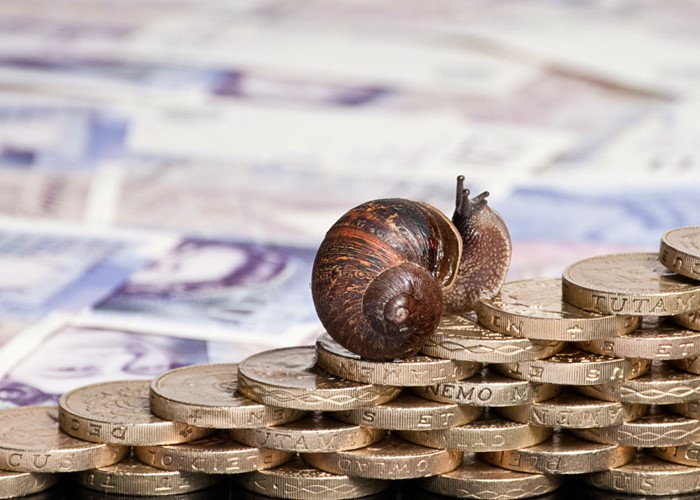
City-dwellers are poor savers, according to a new survey.
Those who live in cities are most likely to have a substandard level of savings.
That’s the findings of the latest ING Direct Savings Monitor, which surveyed 40,000 prople across the nation, to identify the areas with the largest – and smallest – pots of savings.
Here are the ten areas with the lowest median savings per household, identified by ING Direct's savings survey.
|
Town |
Median savings |
|
Central Manchester |
£569 |
|
Hackney |
£749 |
|
Islington |
£751 |
|
Lambeth |
£753 |
|
Tower Hamlets |
£776 |
|
Nottingham |
£776 |
|
Liverpool |
£905 |
|
Southwark |
£808 |
|
Newcastle-Upon-Tyne |
£931 |
|
Norwich |
£959 |
A few things stand out here. For starters, London dominates the list, with five of the ten places going to London boroughs, and four of the five worst offenders. But the rest of the table is made up by big cities – Manchester, Liverpool, Nottingham. Obviously, life in the centre of town tends to be a little more expensive, but it’s interesting how city-dwellers are such poor savers.
The contrast between those living in cities and leafy suburbs is accentuated when you look at the ten areas with the highest median savings levels.
|
Town |
Median savings |
|
Chiltern |
£15,712 |
|
Mole Valley |
£15,435 |
|
South Bucks |
£15,132 |
|
Waverly |
£14,178 |
|
Epsom & Ewell |
£14,047 |
|
Horsham |
£14,031 |
|
South Oxfordshire |
£13,303 |
|
Vale of White Horse |
£13,202 |
|
Three Rivers |
£12,949 |
|
Elmbridge |
£12,922 |
But whether you live in the city or in a well-heeled suburb, it’s always a good idea to build up a decent pot of savings, whether for a deposit, to pay for a big purchase rather than buy on credit, or simply to have a safety net, just in case.
[SPOTLIGHT]So which accounts should we be looking at?
The best easy access accounts
If you’re just getting started with saving, and want to build up a nest egg that you can access at any time if you need it, you may want to go for an easy access account. As the name suggests, this is a savings vehicle which allows you to get to your cash, without having to give notice.
The top account in the market currently is the Poppy Online Saver from Coventry Building Society, paying 3.15% AER (though this includes a 1.15% bonus in the first year). You can open an account with as little as £1, while the building society will also make an annual donation to the Royal British Legion based on the balance you hold in the account.
However, for an easy access account, getting hold of your cash is not that easy – you’re only permitted four penalty-free withdrawals each year.
After that there are quite a few accounts offering similar rates of interest:
|
Account |
Interest rate (AER) |
Minimum balance |
Limited withdrawals? |
|
3.11% (including 2.11% bonus) |
£1 |
No |
|
|
3.10% (including 2.56% bonus) |
£1 |
No |
|
|
3.06% (including 1.06% bonus) |
£1,000 |
Three withdrawals a year |
|
|
3.05% |
£1,000 |
One free withdrawal each year |
Make the most of an ISA
None of the rates on offer from easy access accounts are that exciting, particularly when you consider you will have to pay tax on the returns you do get.
Of course, if you put your money into an ISA instead, the interest you receive is absolutely tax-free – HMRC can’t touch it!
ISAs come in two different forms – cash ISAs and stocks and shares ISAs. I’m going to focus on cash ISAs today, but you can read Savers turn to stocks and shares ISAs for more on investing with your ISA.
You can get a better rate by locking your cash into a longer-term ISA, however I’d be cautious about doing that when base rate can only head upwards from here, despite the likelihood that it will stay at 0.5% for some time to come.
Here are some of the best ISAs in the market today, across a range of term lengths.
|
ISA |
Term |
Interest rate |
Accepts transfers? |
|
12 months |
3.3% variable (includes 2.8% bonus) |
No |
|
|
12 months |
3.25% fixed |
No |
|
|
Two years |
3.75% fixed |
Yes |
|
|
Two years |
3.6% fixed |
Yes |
|
|
Five years |
4.65% fixed |
Yes |
|
|
Five years |
4.3% fixed |
Yes |
Beating inflation
While an ISA guarantees you a tax-free return on your money, it doesn’t guarantee that you will actually get a return at all, at least in real terms.
With inflation still incredibly high (4.2% in June according to the Consumer Prices Index, 5% according to the Retail Prices Index), unless you are getting an interest rate larger than inflation, you’ll effectively be losing cash. And even the Bank of England admits that inflation will remain significant for a while to come yet.
One type of savings account that will guarantee you a return above inflation is an inflation-linked bond. There are a number of these accounts on the market at the moment, all offering slightly different things, so be sure to read Risk-free, high-interest savings accounts for a great run down.